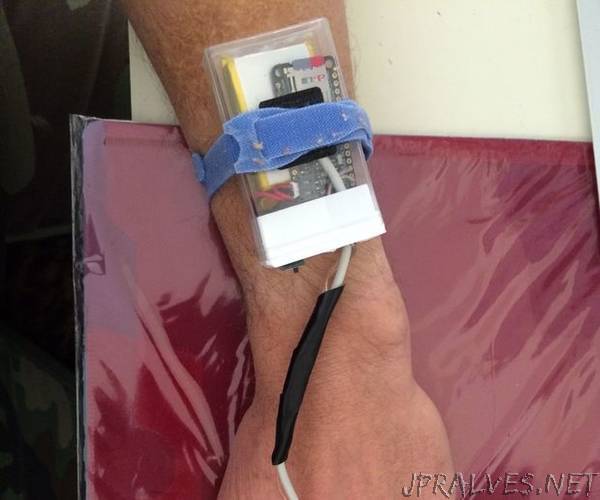
“If you recently visited a doctor, chances are that your basic vital signs were examined by a nurse. Weight, height, blood pressure, as well as heart rate (HR) and oxygen saturation in peripheral blood (SpO2). Perhaps, the last two were obtained from a red-glowing electronic finger probe that displayed relevant numbers on a tiny screen in minutes. That probe is called pulse oximeter and you can find all the basic info about it here.
One can easily buy a simple pulse oximeter, sure, but where is the fun in it? I have decided to build my own, first for the heck of it, but more importantly with a specific application in mind: nocturnal oximetry where both HR and SpO2 data would be continuously collected overnight and recorded on a micro SD card. Instructables already contains several projects of this kind, e.g., two involving Arduino here and here, and one utilizing Raspberry Pi. Mine uses slightly newer sensor MAX30102 from MAXIM Integrated and Adafruit’s Feather M0 Adalogger for control and data recording.
Our project is thus not particularly innovative in terms of hardware and as such would not be worth writing this Instructable, but in the process of creating it I have made crucial advances in software that allowed me to extract data from MAX30102 with much higher consistency and much less noise than software written by MAXIM for this sensor. The performance of our signal processing algorithm is illustrated in the above chart where the two top graphs contain overnight heart rate and oxygen saturation calculated from raw signals by our method (identified by “RF”), while the bottom two graphs show MAXIM’s results produced from exactly the same signals. Standard deviations for HR are 4.7 bpm and 18.1 bpm, and for SpO2 0.9% and 4.4%, for RF and MAXIM, respectively.
(Both RF graphs correspond to minimal autocorrelation threshold of 0.25 and no limit on R / IR correlation; see Steps 4 and 5 for explanation of these terms.)”
